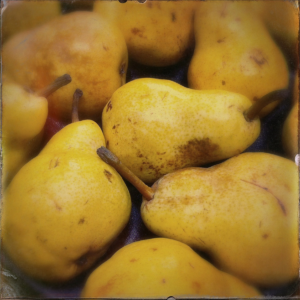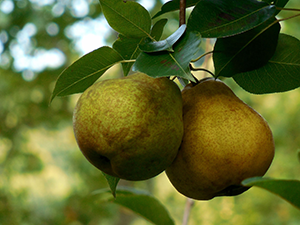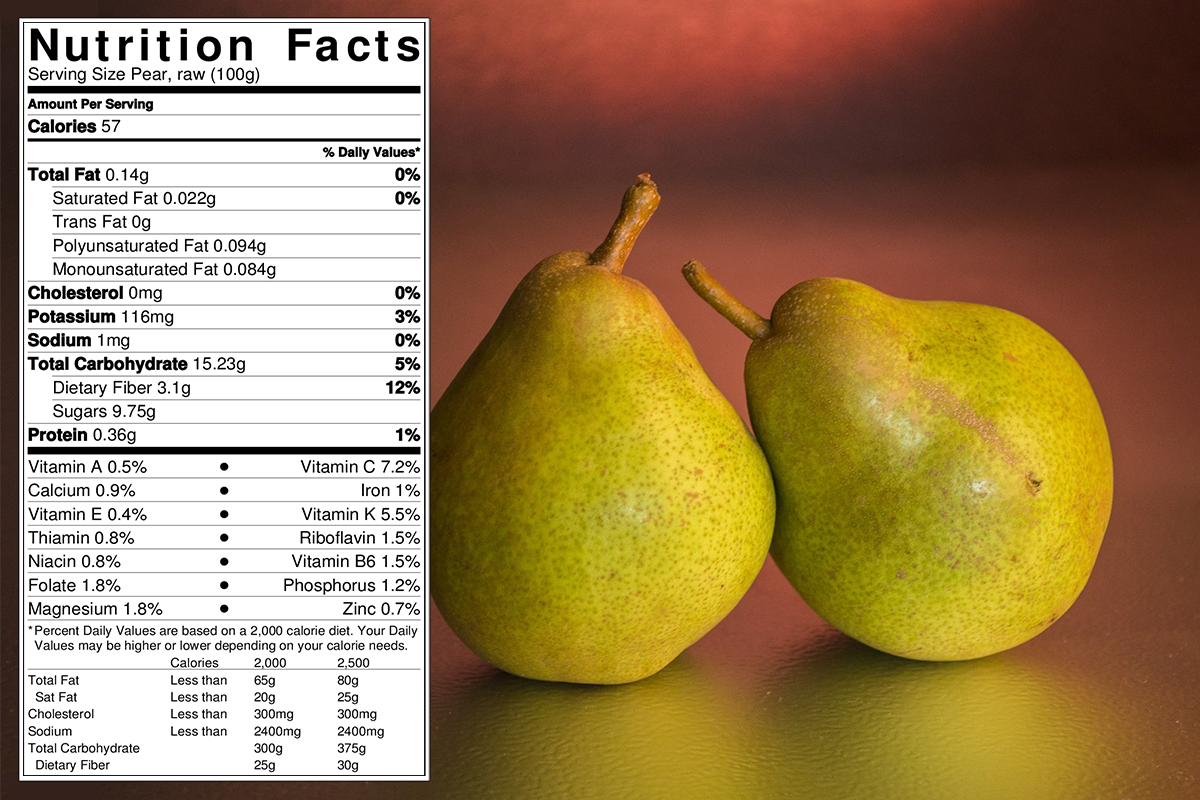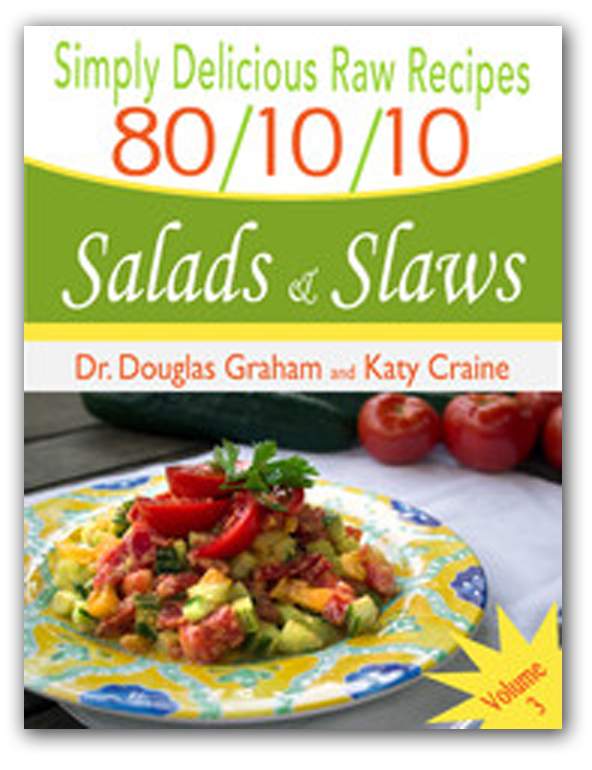
100g raw pear contains 57 calories.
95% carbs, 2% fat, 3% protein
Soft, luscious and sweet, pears come in so many different varieties and flavors that 16th century aristocrats considered
themselves connoisseurs and served as many as 209 varieties at their banquets. Anytime you start feeling bored of winter fruit, try some of the stand out pears listed below.
How to Choose and Store a Pear
How you harvest and store a pear has a bigger impact on its flavor and texture than many other fruits. Depending on how it’s picked and kept, the same pear can be either royal ambrosia or a Shakespearean put down (The bawdy old bard wrote “… your old virginity is like one of our French withered pears, it looks ill, it eats drily.”)
Pears are unique in that allowing them to ripen on the tree increases their grittiness and mealy texture. Picking them early prevents the deposits of lignin and cellulose distributed throughout the flesh from maturing, giving the pears a smoother texture. After picking, allow them to ripen in a cool, dark space for several weeks. They can be ripened faster by placing a banana on their shelf and covering with a breathable cloth, or putting the fruits together in a paper bag.

Pears ripen from the inside out, so that by the time they feel soft to the touch they may already be overripe at the core. This also means that the skin is the last thing to show signs of ripeness, so few pears change color when they are ready to eat and you can’t tell when a pear is ripe by looking at it. When a pear is ripe, it should have a sweet, distinctively “pear” aroma and should feel spongy around the stem area. “Check the neck” is a good rhythm to remember how to tell if a pear is ripe.
Varieties of Pears
There are many types of pears, some crispy, others smooth like butter. Add some variety to your pear platter by trying some of these unique varieties.
Abbé Fetel: Uniquely slim, this Italian-specialty pear has a shape and golden-brown color reminiscent of a banana. The flavor is considered bolder than D’anju or Bartlett, with honeyed, almost amaretto high notes and a fruity sweetness formed by a higher than average ratio of fructose to other sugars.
Bosc: “If limited to one pear, it would be Bosc,” wrote Charles Downing in his guide to pears. This beautiful golden pear is covered with a cinnamon-colored russeting. Its yellow-white flesh is firm and sometimes slightly crispy, but juicy with a lemony, musky aroma. Boscs originate in Belgium.
Red Bartlett: Red Bartlett pears are identical in taste and texture to Green Bartlett’s, but with a surprising quirk: thanks to a genetic mutation, their skin is red, not green. In 1938, a farmer in Zillah Washington discovered a cranberry red pear hanging alongside his green fruits. This quirk is called a “bud sport,” and it happens on other fruit trees too, most notably, peach trees that inexplicably produce nectarines.
Conference Pear: About 80% of all pears produced in the UK are Conference, a pear sometimes known as the “banana-pear” thanks to its unusually long shape and pale yellow flesh that can tinge pink around the core when perfectly ripe. It was presented at the National British Pear Conference in London in 1885, where it won first prize.
D’Anjou: Now the most popular pear in America, this squat, egg-shaped pear is one of the least elegant but most delicious pears to leave France. D’anjou pears have short necks and green skins, with aromatically juicy, creamy white and slightly gritty flesh. They are believed to originate near Angers, in the Anjou region of France.
Flemish Beauty: This wild, Belgian pear was introduced to the United States in the early 1800’s. Similar to D’Anjou in size and shape, Flemish beauties are firm and slightly granular in texture, like eating musky, juicy brown sugar.








